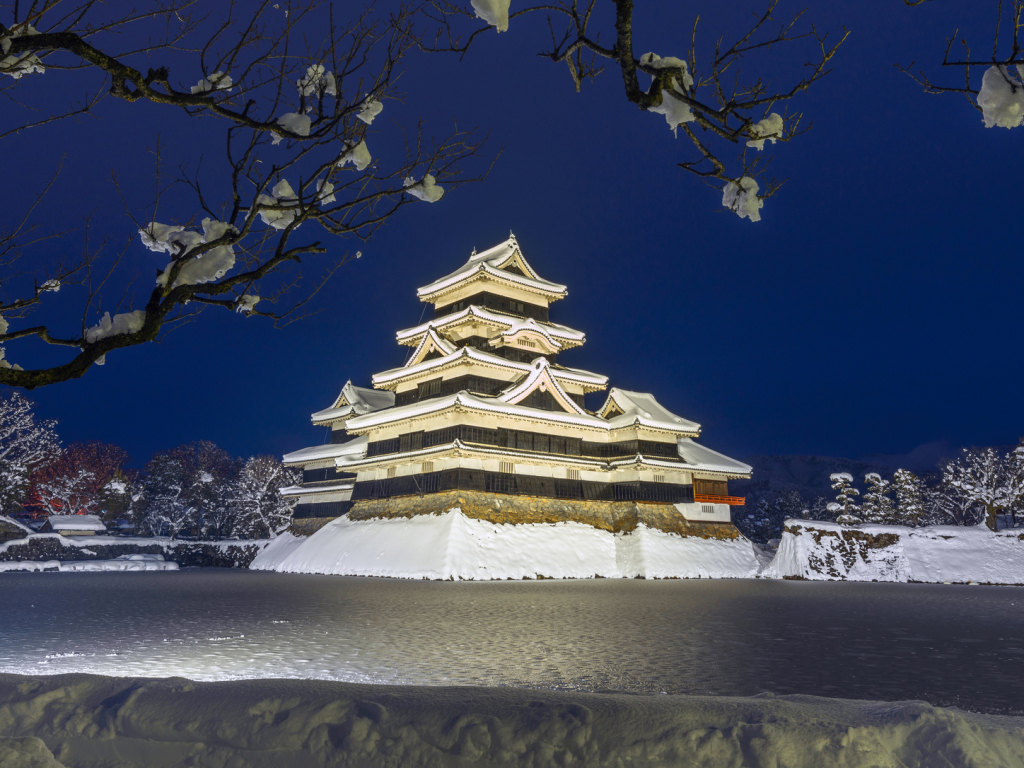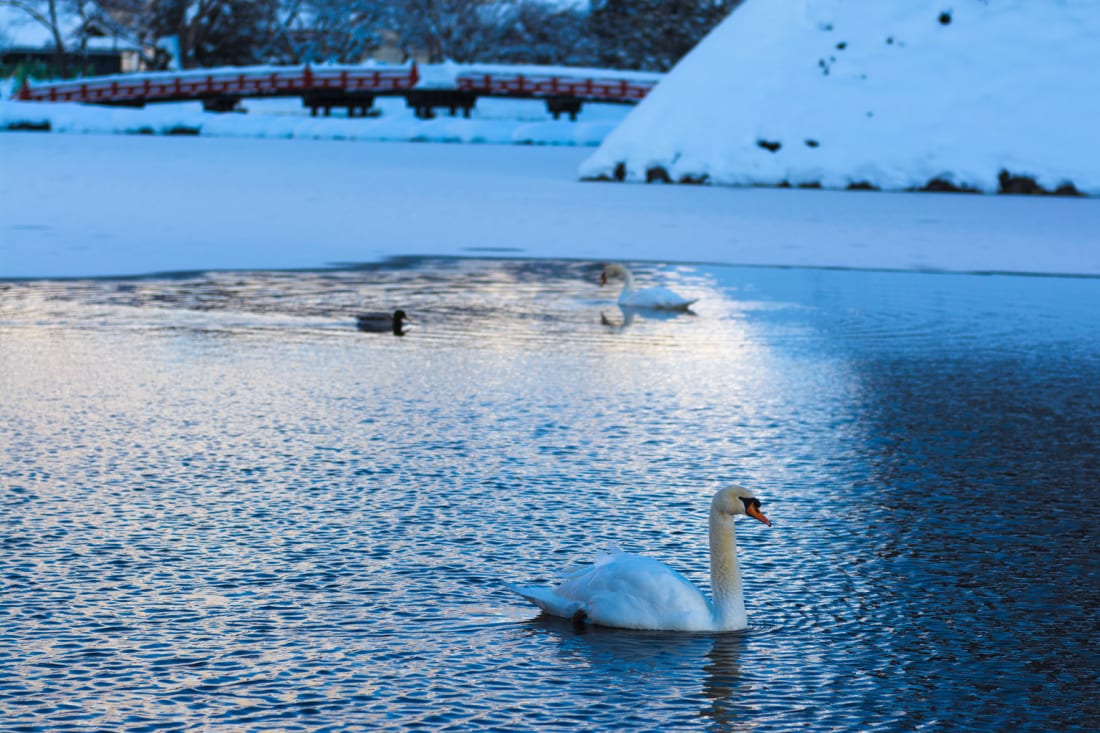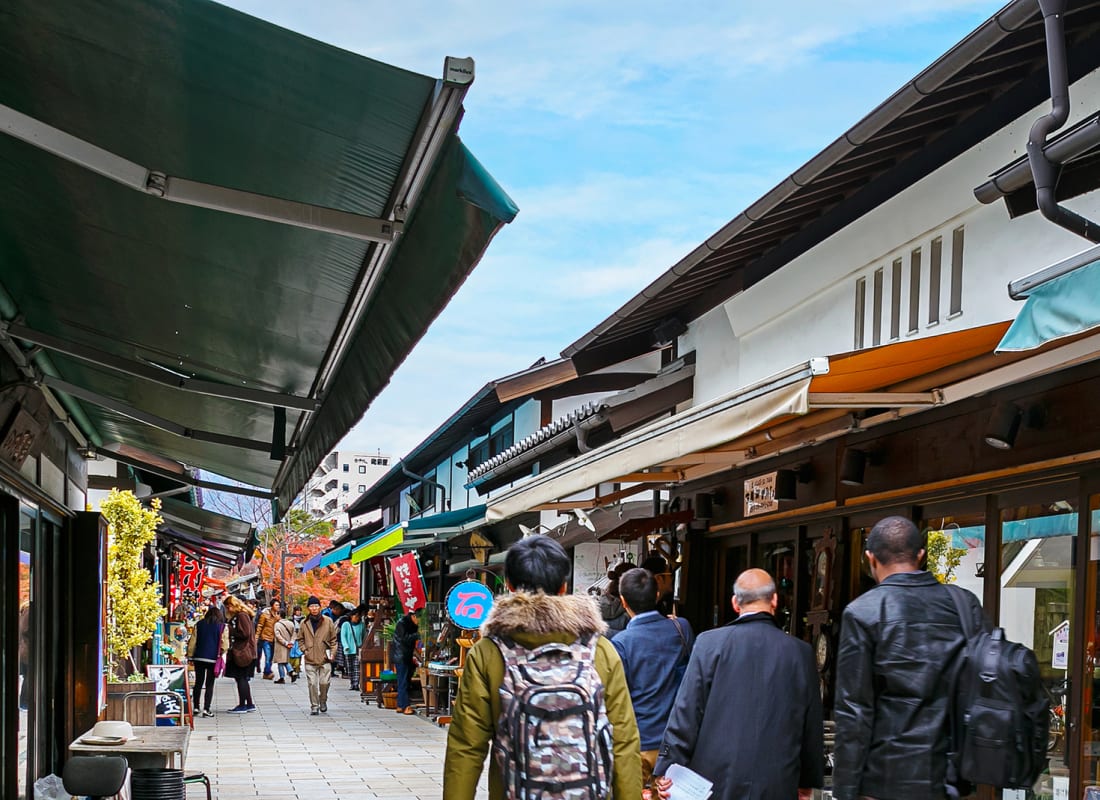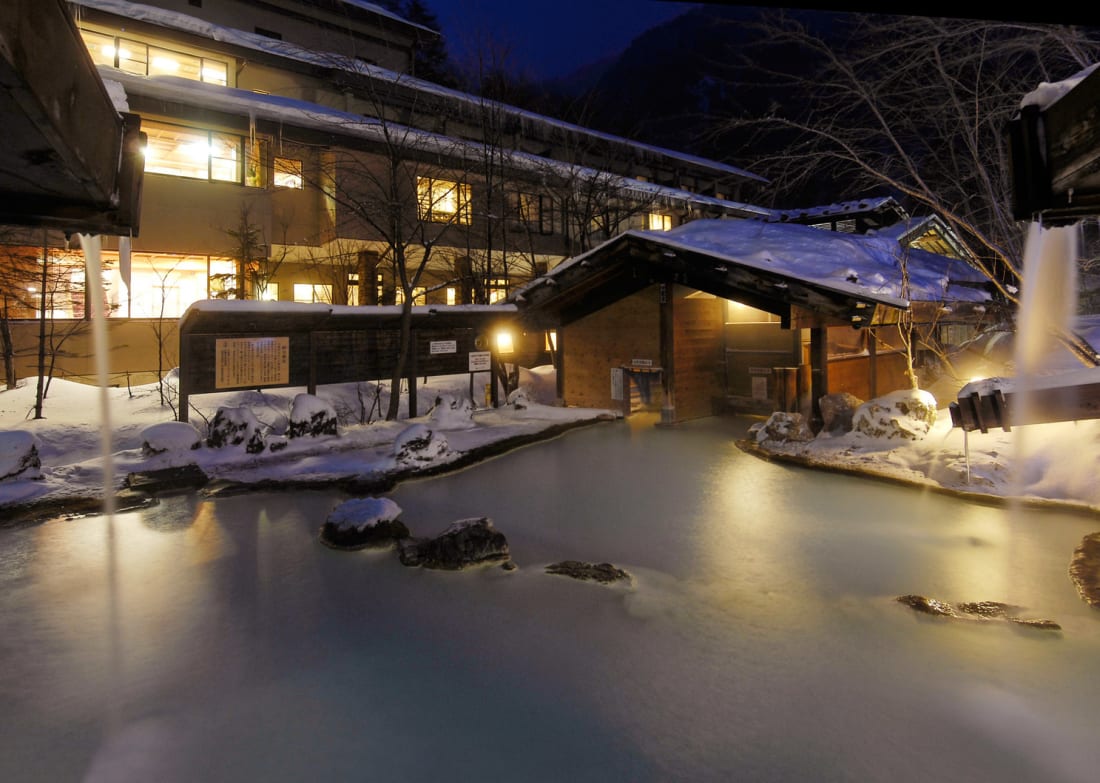Matsumoto in central Nagano Prefecture is surrounded by the beauty of the snow-covered Japanese Alps and as such has great access to majestic slopes for skiing and snowboarding. The castle town is also rich in history, with traditional festivals held during all seasons of the year. For those reasons Matsumoto is a terrific place to enjoy the wonders of winter in Japan.
Dating back to 1593, Matsumoto Castle is the oldest castle remaining in Japan. Because of its authenticity, this is one of the few castles that is also designated as a National Treasure. Inside the castle there are historical documents, artifacts, and samurai armor on display. Outside you will find swans swimming gracefully in the moat and it picturesque winter views of the northern Japanese Alps.
The Salt Battle
While one can visit the castle any time of year, the Ameichi (candy market) festival, held January 11–12, 2020, is a historic tradition that dates back to the days when Matsumoto was a key spot along the Salt Road of Japan. Merchants carried salt from the Sea of Japan inland to trade this commodity at the Matsumoto market for other goods.
It was such a key resource that 450 years ago the Niigata daimyo Uesugi Kenshin, and the daimyo from Yamanashi Prefecture, Takeda Shingen, held a fierce battle over the salt trade at Matsumoto. The battle took place in early January, and today this festival commemorates that skirmish, and people dress in samurai costumes in honor of it.
Sweet Victory
During the Edo Era the number of children in Japan who survived past their first year was low. Candy was given to young children to celebrate life, and sweets were also a popular gift on the New Year’s holiday. Thus when Matsumoto’s salt market faded away, candy became a logical replacement and the shops at the now famous candy market are popular with tourists. Today during the festival the streets are lined with many candy stalls offering a variety of treats.
When you are not busy munching on some delicious candy you purchased at the market you can watch the procession of people dressed in traditional festival attire as the carry the omikoshi (a portable shrine used in festivals) through the main streets of Matsumoto.
Following the Ame Ich festival, an ice sculpture festival is held on Matsumoto Castle grounds on the last weekend in January (this year February 1-2, 2020). Top sculptors from across Japan come to Matsumoto and create life-size, intricate carvings of animals, dragons, scenes from mythological stories and much more. Kids also have fun on the long ice slide. Warm up with hot snacks and sake.
Hit the Famed Nagano Slopes
Matsumoto is of course an excellent place for skiing, snowboarding and snowshoeing. Norikura Kogen is the most accessible ski resort from Matsumoto. The road that leads to this ski resort is the highest in Japan (2,700 meters high) and is surrounded by towering walls of snow, which themselves have become a tourist attraction. Snowshoeing to Zengoro Falls in Norikura Highlands to see the waterfall frozen into solid ice a breathtaking experience. Matsumoto is also the gateway to the popular and ski resort of Hakuba, which can be conveniently accessed by train.
Unthaw at Soothing Hot Springs Resorts
As the city is in the middle of the mountains, an escape from the cold is appreciated. The city offers many hot spring onsen resorts where you can soak in a hot bath and warm the bones. A 20-minute bus ride from downtown, The most accessible hot spring is Asama Onsen, which hosts an illuminations display until mid-April.
Further out is the hot spring resort of Shirahone, which means white bone because the water is milky white due to all the natural chemicals and minerals in the water. The whiteness is so dense it is hard to see your hand underwater. Not all baths at Shirahone are unisex.
When the winter blues strike why not escape to Matsumoto to enjoy the history and wonders of winter. From entertaining festivals to winter sports to warming up in Japanese hot spring baths, Matsumoto is sure to cure the winter blues.
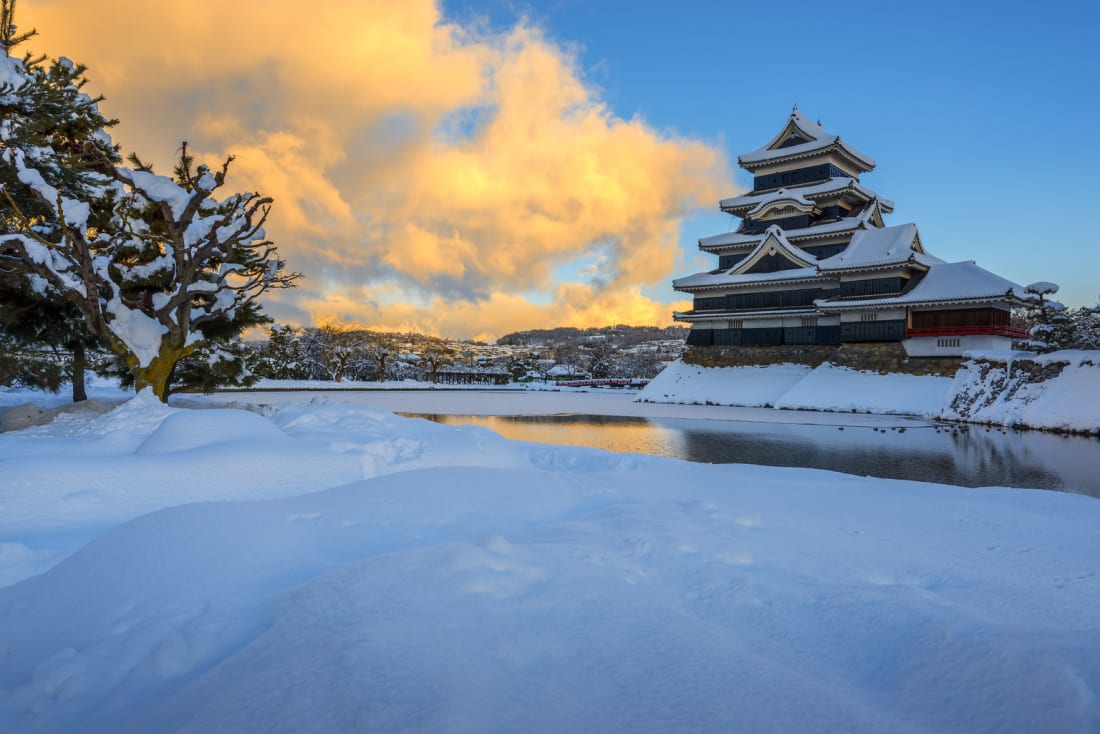
Access: From Tokyo, by train, leave from Shinjuku Station on the Chuo Line. Take the Azusa Express about three hours to Matsumoto Statio, the final stop. The highway bus to Matsumoto also departs from Shinjuku Station, following the Chuo Expressway (approximately three hours). Once there, the city is easy enough to explore on foot. Matsumoto Castle is a 10-minute walk from the station. To access the ski resorts and hot spring spas there are frequent trains and buses departing from Matsumoto Station. The tourist office inside the station can assist you with travel information.

